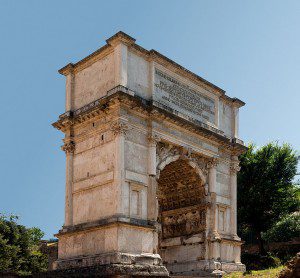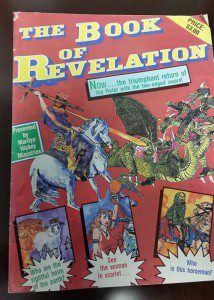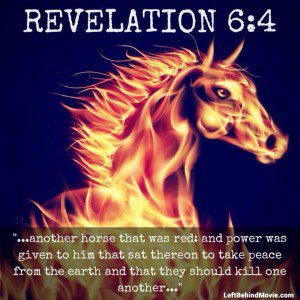To supplement our ongoing tour through the World’s Worst Books, I’m taking some time on Fridays to remember what the book of Revelation, and other apocalyptic literature in the Bible, is really all about.
This week’s reminder comes from J. Nelson Kraybill, from the introduction to his book, Apocalypse and Allegiance: Worship, Politics, and Devotion in the Book of Revelation.
John of Patmos, author of the book of Revelation, provides a constellation of images and narratives that help us understand how ideologies shape the world. Revelation makes abundant use of symbols, and John understands how these forge political and spiritual identity. In particular, Revelation highlights the way worship, with its reliance on symbol, expresses and shapes allegiance. The last book of the Bible is not a catalog of predictions about events that would take place 2,000 years later. Rather, it is a projector that casts archetypal images of good and evil onto a cosmic screen. These images first of all speak to realities of the author’s era. But Revelation also serves as a primer on how good and evil interact in every generation.
The central political reality in the author’s day — the late first century — was the indomitable Roman Empire and its “divine” emperors. The pressing issue for John’s readers was how Christians, who gave their highest loyalty to Jesus, should conduct themselves in a world where economic and political structures assumed that everyone would worship the emperor. While no Western nation has outright rule worship today, we do have political, military, and economic powers to which millions give unquestioned allegiance.
John championed the same hope for Christ’s return that animates the church today, but his vision does not predict specific political, cultural, or natural events of the 21st century. He received his vision in the first-century Mediterranean context, and symbols in his work relate primarily to realities of that era. But the world he inhabited — the Roman Empire — and the symbolic universe his vision created have uncanny parallels to our circumstances today. Sin and death still work havoc, empires continue to rampage, and with John we await the liberation of all creation, which will obtain when Christ returns.












